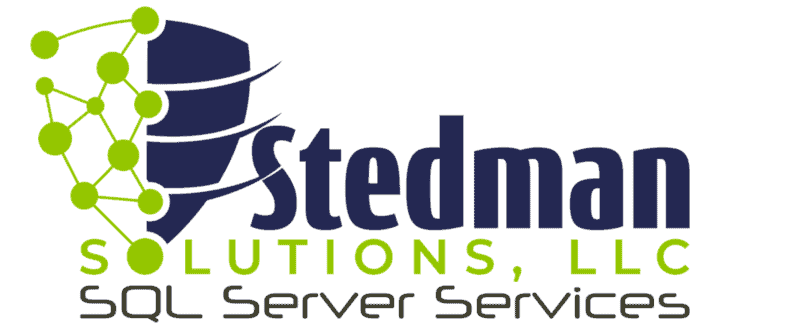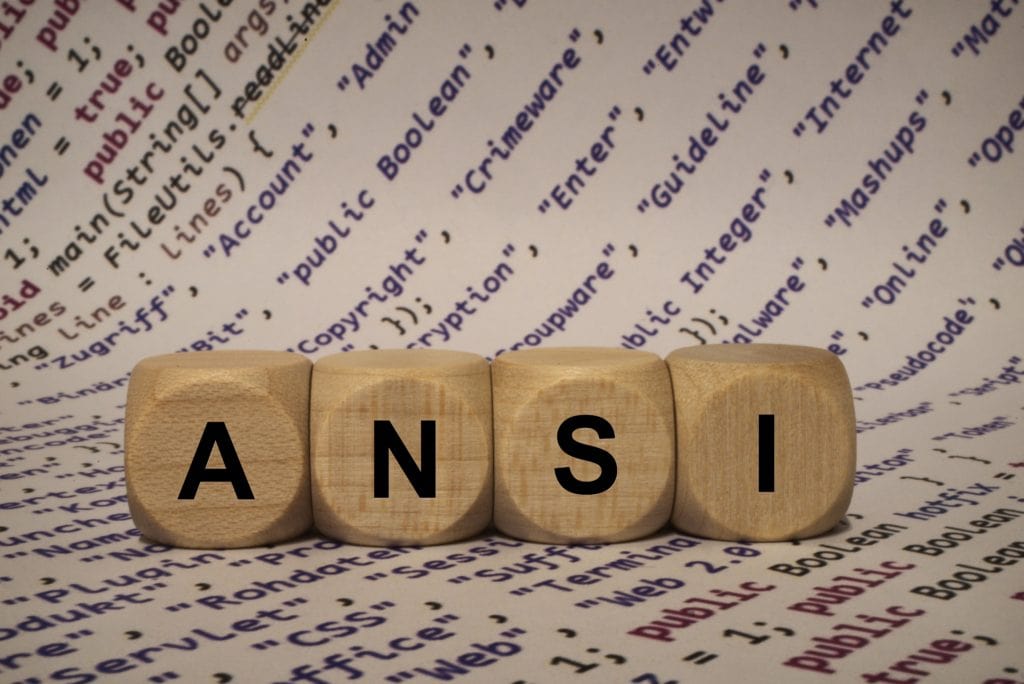
Blog post written by Eric Isaacs one of our Stedman Solutions team members.
Database management systems play a critical role in powering modern applications and managing vast amounts of data. MySQL 8 and SQL Server 2022 are two prominent relational database systems that offer robust features, scalability, and security. We will explore the key differences between MySQL 8 and SQL Server 2022, focusing on ANSI compatibility, aggregate functions, and group by behavior, as well as high availability and disaster recovery. We’ll also discuss migrating on-premises versions of the databases to the cloud. There are more aspects to the differences between the database systems not covered but this quick article will provide application developers with a quick understanding of pros and cons of each system.
ANSI Compatibility:
A Relational Database Management System (RDBMS) should be American National Standards Institute (ANSI) compliant because adherence to the ANSI SQL standard ensures consistency, portability, and interoperability across different database systems. By conforming to the ANSI standard, an RDBMS ensures that SQL queries and statements written for one database can be executed on another compliant database without significant modifications or differences in results. This portability enables organizations to switch between different RDBMS vendors or deploy applications on various platforms without rewriting the SQL code. It also allows your developers to port their skills easily from one RDBMS to another.
- MySQL 8:
- MySQL has improved its ANSI SQL compliance over the years, making it more compatible with standard SQL. However, certain ANSI features are still not fully supported or require specific syntax.
- SQL Server 2022:
- SQL Server has historically been more ANSI-compliant than MySQL, with a broader range of features that adhere to the ANSI SQL standard, but still less compliant than other RDBMS such as PostgreSQL.
Aggregate Functions Differences
- MySQL 8:
- MySQL supports a powerful set of aggregate functions, including COUNT, SUM, AVG, MIN, MAX, etc. However, using aggregate functions with NULL values requires careful handling, as the behavior may vary in certain cases.
- SQL Server 2022:
- SQL Server provides a comprehensive suite of aggregate functions, similar to MySQL. Additionally, it introduces several built-in statistical functions and window functions for advanced data analysis.
Group By Differences
- MySQL 8:
- In MySQL, the behavior of the GROUP BY clause is relaxed compared to SQL Server. MySQL allows non-aggregated columns in the SELECT clause that are not part of the GROUP BY clause, leading to potentially ambiguous results. Developers must be cautious when using GROUP BY to ensure accurate aggregation.
- SQL Server 2022:
- SQL Server enforces strict adherence to the GROUP BY clause, requiring all non-aggregated columns in the SELECT clause to be part of the GROUP BY clause. This helps avoid ambiguities and ensures consistent results. This also prevents unintended bugs in SQL code which can save development and maintenance costs and prevent business decisions from being made on inaccurate aggregate function results.
Licensing Costs
The primary advantage of MySQL over SQL Server is the licensing costs.
- My SQL 8
- No licensing costs.
- Free to use.
- SQL Server 2022
- No licensing costs for non-production environments (ex: development, test, and student learning environments.) as long as the server is not hosting any production level databases.
- Licensing costs for production servers only.
- Licenses transfer which Always On environments, such that if only one server is ever in production at a time, then only one license is required, but if all replicas are used at the same time, other than for backups or disaster recovery, then multiple licenses may be required as per Microsoft.com.
Cloud Migrations

Both MySQL 8 and SQL Server 2022 offer various tools and features to facilitate the migration of on-premises installations to cloud environments. MySQL leverages its broad cloud provider support and replication capabilities, while SQL Server provides native integration with Microsoft Azure and specialized migration tools like Data Migration Assistant and Azure Database Migration Service, making the migration process smoother for SQL Server users looking to move to the Azure cloud. The choice between MySQL and SQL Server for cloud migration depends on the specific requirements, existing technology stack, and preferences of the organization or users involved in the migration process.
- MySQL 8:
- MySQL has extensive support from various cloud service providers, such as Amazon Web Services (AWS), Google Cloud Platform (GCP), and Microsoft Azure. These cloud providers offer managed MySQL database services, making it relatively straightforward to migrate from an on-premises installation of MySQL to their cloud offerings.
- Replication and Backups: MySQL has robust replication features, including master-slave replication and Group Replication, which facilitate data synchronization between on-premises and cloud databases. Additionally, MySQL offers various backup methods like mysqldump, binary log backups, and hot backups to ensure data integrity during the migration process.
- Database Import/Export: MySQL provides several utilities and tools like mysqldump and MySQL Workbench, which simplify the process of exporting data from an on-premises installation and importing it into a cloud instance.
- SQL Server 2022:
- Azure Integration: SQL Server 2022 offers seamless integration with Microsoft Azure, Microsoft’s cloud platform. This includes Azure SQL Database and Azure SQL Managed Instance, both designed to simplify the migration of on-premises SQL Server databases to the cloud.
- Data Migration Assistant (DMA): SQL Server 2022 includes the Data Migration Assistant, a tool that helps assess on-premises databases for compatibility with Azure SQL Database and provides recommendations and step-by-step guidance for the migration process.
- Azure Backup and Restore: Azure offers comprehensive backup and restore capabilities, allowing for easy and secure migration of SQL Server databases to the cloud. Users can utilize Azure Backup to create secure backups of on-premises databases and then restore them in the Azure cloud environment.
- Azure Database Migration Service (DMS): SQL Server users can leverage the Azure Database Migration Service, a fully managed service that simplifies and automates the migration process from on-premises SQL Server to Azure SQL Database or Azure SQL Managed Instance.
A breakdown of key differences:
| Aspect | MySQL 8 | SQL Server 2022 |
| ANSI Compatibility | Improving, but not fully compliant | Strong compliance with ANSI SQL. Most SQL ports to other ANSI compliant database systems. |
| Licensing | Open-source, free to use. | Requires licensing in production environments which can be considerably expensive. |
| High Availability | Offers high availability through MySQL Replication, Group Replication, and InnoDB Cluster. These technologies enable data replication across multiple servers, allowing for failover and read scaling to ensure continuous availability. Relies on community-driven solutions and third-party tools for capabilities, making it more suitable for certain use cases where specific high availability and disaster recovery requirements are still met. | Provides more advanced and integrated features for seamless failover and robust disaster recovery scenarios. Always On Availability Groups and Failover Clustering Provide robust high availability. These features enable automatic failover, data redundancy, and load balancing to maintain uninterrupted service in case of node failures. |
| Disaster Recovery | Relies on backup solutions and point-in-time recovery methods to handle disaster scenarios. Tools like mysqldump and binary log backups help recover data in case of data loss, but built-in disaster recovery features are limited compared to SQL Server. | Enhances disaster recovery with advanced features like Backup to URL, Backup and Restore Accelerated with Azure Blob Storage, and Managed Backups. It also includes Active Geo-Replication to create readable secondary replicas across different regions for disaster recovery purposes, providing comprehensive protection against data loss. |
| Performance | High performance for read-heavy workloads. | High performance for read-heavy workloads. Efficient for complex queries. |
| Scalability | Good scaling capabilities. | Excellent scalability with partitioning. |
| Security | Improved security features. | Robust security. Includes Transparent Data Encryption (TDE). |
| Aggregate Functions | Rich set of functions. Requires caution with NULLs. Allows Non-ANSI compliant syntax which can produce varying or unexpected results. | Comprehensive list of functions. Includes windowing functions. ANSI Compliant. Consistent results. |
| GROUP BY Behavior | Relaxed, potential for ambiguous results. Non-ANSI Standard SQL will compile and run. Issues may need to be identified in production environments by users. | Strict adherence to ANSI standards. Consistent results. Errors caught in development. |
| Ecosystem and Community | Vast open-source community support. No one person or company is to blame for security vulnerabilities and bugs. Responsiveness to bug reports and the speed of resolution can be influenced by the level of community involvement. | Extensive Microsoft ecosystem and support. One company to blame when security is compromised, or bugs are identified. Security issues and bugs are addressed in priority order by Microsoft. |
| Replication and Clustering | Limited built-in options | Advanced replication and clustering features |
| Data Warehousing Support | Limited for large-scale analytics | Enhanced support for data warehousing |
MySQL 8 and SQL Server 2022 are both powerful database management systems, each with strengths and weaknesses. MySQL 8 offers low initial cost of ownership, open-source flexibility, and an active community, while SQL Server 2022 boasts strong ANSI compliance and an extensive ecosystem.
It’s important to note that the choice between MySQL and SQL Server (or any other database system) depends on specific project requirements, performance needs, budget considerations, and existing technology ecosystems. Each database system has its strengths and weaknesses, and the best choice ultimately depends on the unique needs of the application and the organization. Understanding the differences between these platforms can help organizations make informed decisions and leverage the strengths of each to build robust and efficient applications. If you still need help making the choice between the two systems, schedule a call with Stedman Solutions and we can help you decipher the differences.
Contact Info
Stedman Solutions, LLC.PO Box 3175
Ferndale WA 98248
Phone: (360)610-7833

